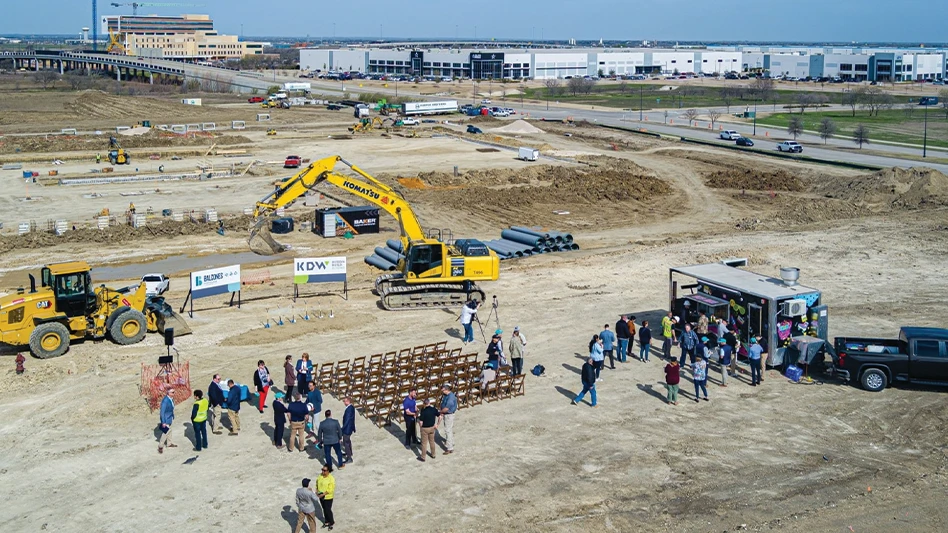FERROUS MARKETS HOLD FIRM
The markets for ferrous scrap should hold up fairly well throughout the next several quarters, according to speakers at the recent Institute of Scrap Recycling Industries Inc. (ISRI) Commodities Roundtable Forum.
Opening the ferrous meeting, John Tulloch, executive vice president for IPSCO Steel, Lisle, Ill., noted that growth should be positive in all major global economies next year, though overall growth will moderate from this year. According to Tulloch, the key growth areas will be China, India, CIS (Commonwealth of Independent States) countries, Eastern Europe and South America.
Adding to his overall upbeat outlook, Tulloch said end markets, for the most part, should be positive, with the likely exception of the automotive market, where he sees difficult conditions, especially for domestic auto producers. However, residential and commercial construction should be fairly strong, while energy, machinery and equipment and off-road transportation should have a positive influence on the steel industry, Tulloch said.
Along with steady markets going forward, he also said he saw continued U.S. steel industry restructuring, with more high-profile mergers being announced during the next several years.
Tulloch added that import issues are becoming a greater concern for domestic steel producers. "We are reaching a disruptive threshold in certain products," he said. "China is causing some concerns."
Robert Hunter with Midrex Technologies, Charlotte, N.C., noted that direct reduced iron has shown strong growth. While more electric arc furnaces are being built, less ferrous scrap is available, resulting in more demand for substitutes.
On the European side, Peter Mathews with Black Country Metals, a United Kingdom-based scrap metal company, said that Spain, Turkey and regions in the southern part of the continent continue to be popular consuming markets. With the increase in scrap demand, Mathews also noted that demolition scrap was becoming a growing part of the ferrous scrap supply stream.
Additionally, Western European countries are investing money in either building or expanding foundries in Eastern Europe, according to Mathews.
Another factor that is helping to drive European scrap markets has been the decline in scrap coming from Russia. "[Russian steel mills] are absorbing more of their scrap internally," he said. "Russian steel mills may look at importing more scrap."
Concluding the ferrous roundtable, Wim van Acker with Roland Berger Strategy Consultants LLC, Munich, Germany, said he expected ferrous scrap markets to be volatile, but fairly strong. "The steel industry is pretty healthy. We also are optimistic about the scrap business," van Acker said. He mentioned some drivers for the U.S. steel industry, which included an increase in merger and acquisition activity, the steady growth in the U.S. economy, China’s role as an important global player and the increase in steel input prices.
While the overall trend is upward, the consolidation in the steel industry means that scrap processors will have less power. Further, van Acker noted, "Some steel mills are looking to enter the scrap market and are investing in developing substitutes."
Van Acker agreed with Tulloch, saying that a large part of steel industry growth going forward will come from the construction sector, while domestic auto production will soften.
According to van Acker, steel input prices have also increased, particularly for ferrous scrap, because of a weak U.S. dollar and increasing global demand for scrap. "Global steel suppliers are backward integrating into iron ore, coal mining and scrap processing," he added.
Sponsored Content
Labor that Works
With 25 years of experience, Leadpoint delivers cost-effective workforce solutions tailored to your needs. We handle the recruiting, hiring, training, and onboarding to deliver stable, productive, and safety-focused teams. Our commitment to safety and quality ensures peace of mind with a reliable workforce that helps you achieve your goals.
Sponsored Content
Labor that Works
With 25 years of experience, Leadpoint delivers cost-effective workforce solutions tailored to your needs. We handle the recruiting, hiring, training, and onboarding to deliver stable, productive, and safety-focused teams. Our commitment to safety and quality ensures peace of mind with a reliable workforce that helps you achieve your goals.
Sponsored Content
Labor that Works
With 25 years of experience, Leadpoint delivers cost-effective workforce solutions tailored to your needs. We handle the recruiting, hiring, training, and onboarding to deliver stable, productive, and safety-focused teams. Our commitment to safety and quality ensures peace of mind with a reliable workforce that helps you achieve your goals.
Sponsored Content
Labor that Works
With 25 years of experience, Leadpoint delivers cost-effective workforce solutions tailored to your needs. We handle the recruiting, hiring, training, and onboarding to deliver stable, productive, and safety-focused teams. Our commitment to safety and quality ensures peace of mind with a reliable workforce that helps you achieve your goals.
Sponsored Content
Labor that Works
With 25 years of experience, Leadpoint delivers cost-effective workforce solutions tailored to your needs. We handle the recruiting, hiring, training, and onboarding to deliver stable, productive, and safety-focused teams. Our commitment to safety and quality ensures peace of mind with a reliable workforce that helps you achieve your goals.
While the global steel industry is consolidating and even moving toward having more of an ownership stake in the raw material supply side, van Acker said that to remain viable, scrap processors need to grow in size, develop new markets and add more value for customers and suppliers.
Consolidation in the scrap industry, which has ramped up during the past year, still has far to go. Despite the fairly significant acquisitions of the past 18 months, the industry is still highly fragmented. But by growing and consolidating, scrap dealers would be in a better position to negotiate with vendors, leverage their logistics networks and hold the line on prices, positioning them to become global players.
"Global scrap demand has grown 5.6 percent since 1999; U.S. demand has grown 2.7 percent," van Acker said. "It is still a matter of who will give you the best price. Increasing your export capabilities increases your options."
Van Acker concluded, "The steel industry is still in good shape. The scrap industry will continue to share in steel’s success."
(Additional news about ferrous scrap, including breaking news and consuming industry reports, is available online at www.RecyclingToday.com.)
Get curated news on YOUR industry.
Enter your email to receive our newsletters.

Explore the October 2006 Issue
Check out more from this issue and find your next story to read.
Latest from Recycling Today
- Smithers report looks at PCR plastic’s near-term prospects
- Plastics association quantifies US-EU trade dispute impacts
- Nucor expects slimmer profits in early 2025
- CP Group announces new senior vice president
- APR publishes Design Guide in French
- AmSty recorded first sales of PolyRenew Styrene in 2024
- PRE says EU’s plastic recycling industry at a breaking point
- Call2Recycle Canada, Staples Professional expand partnership






